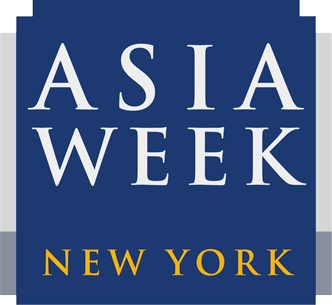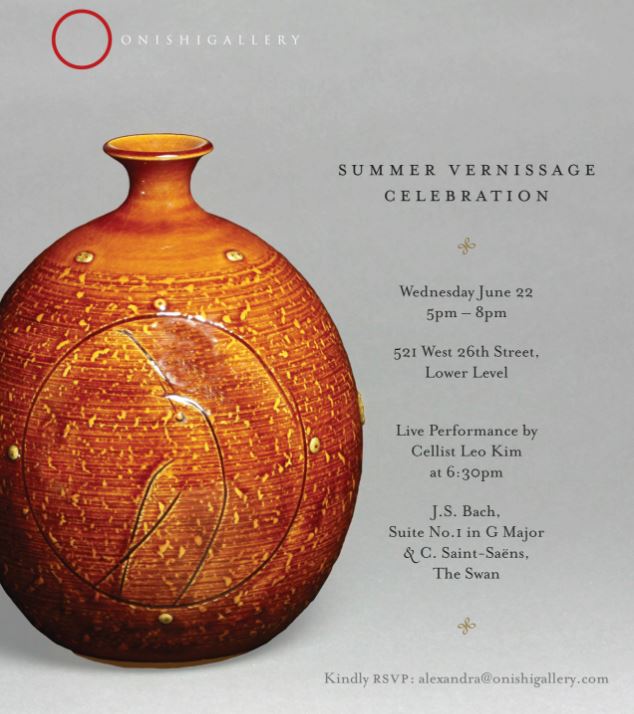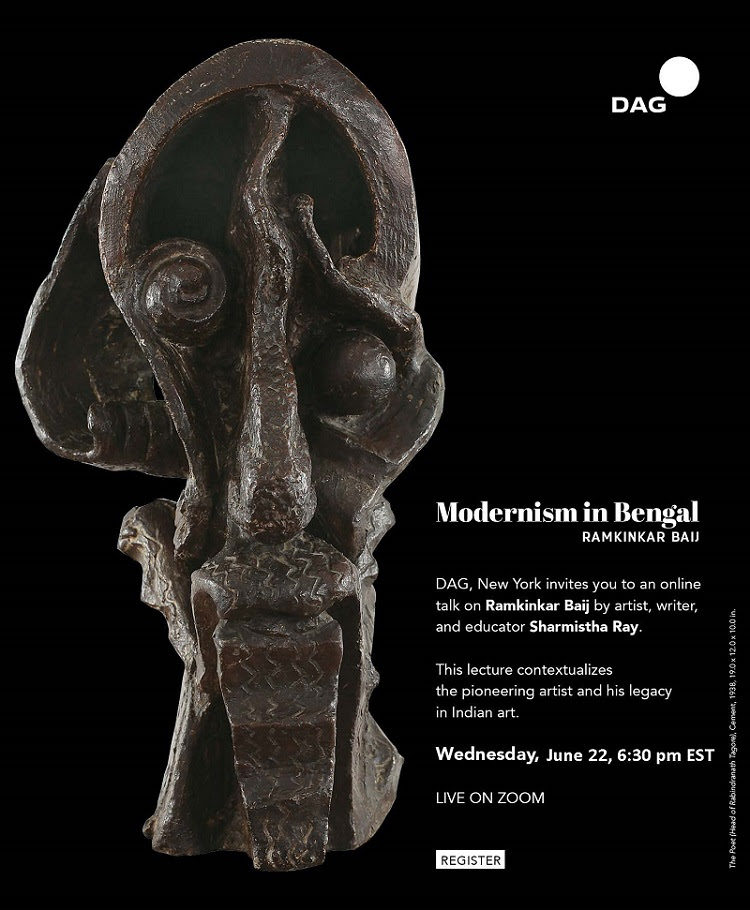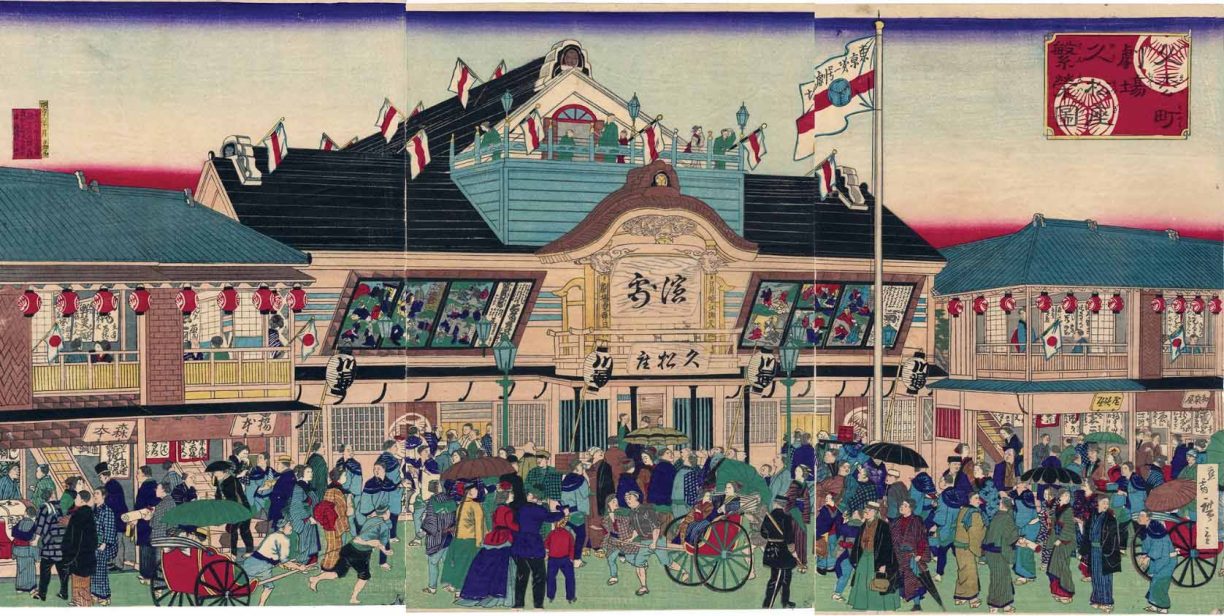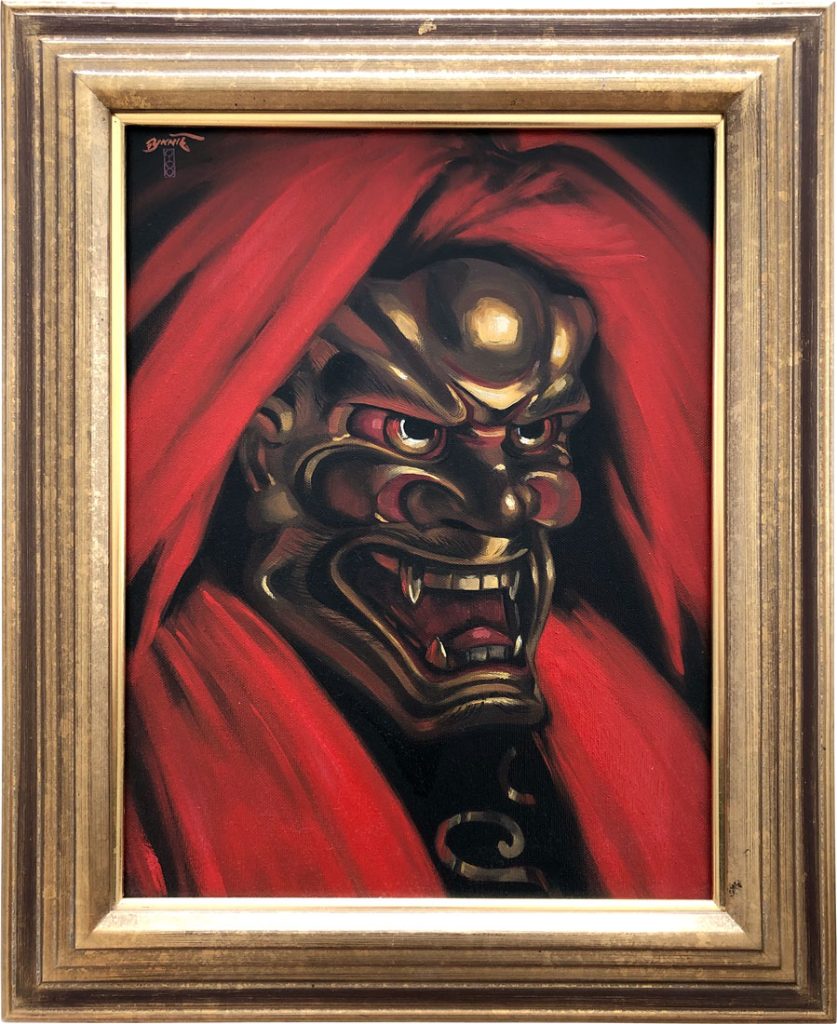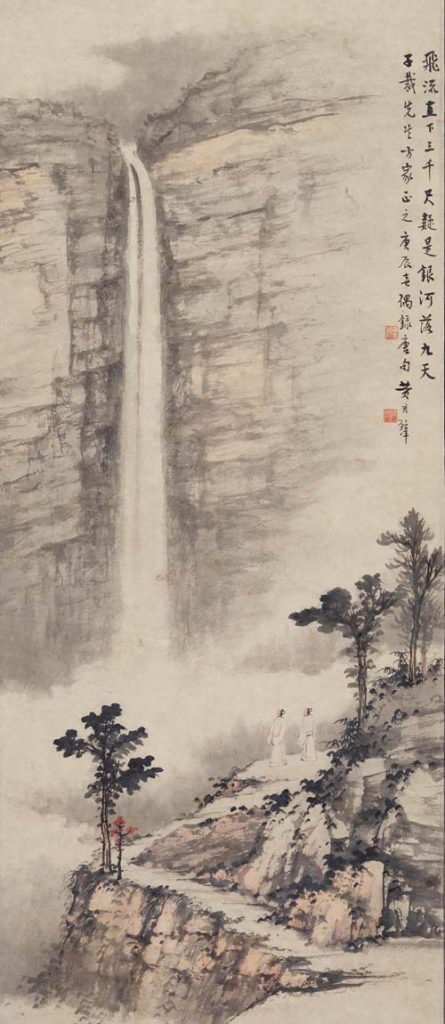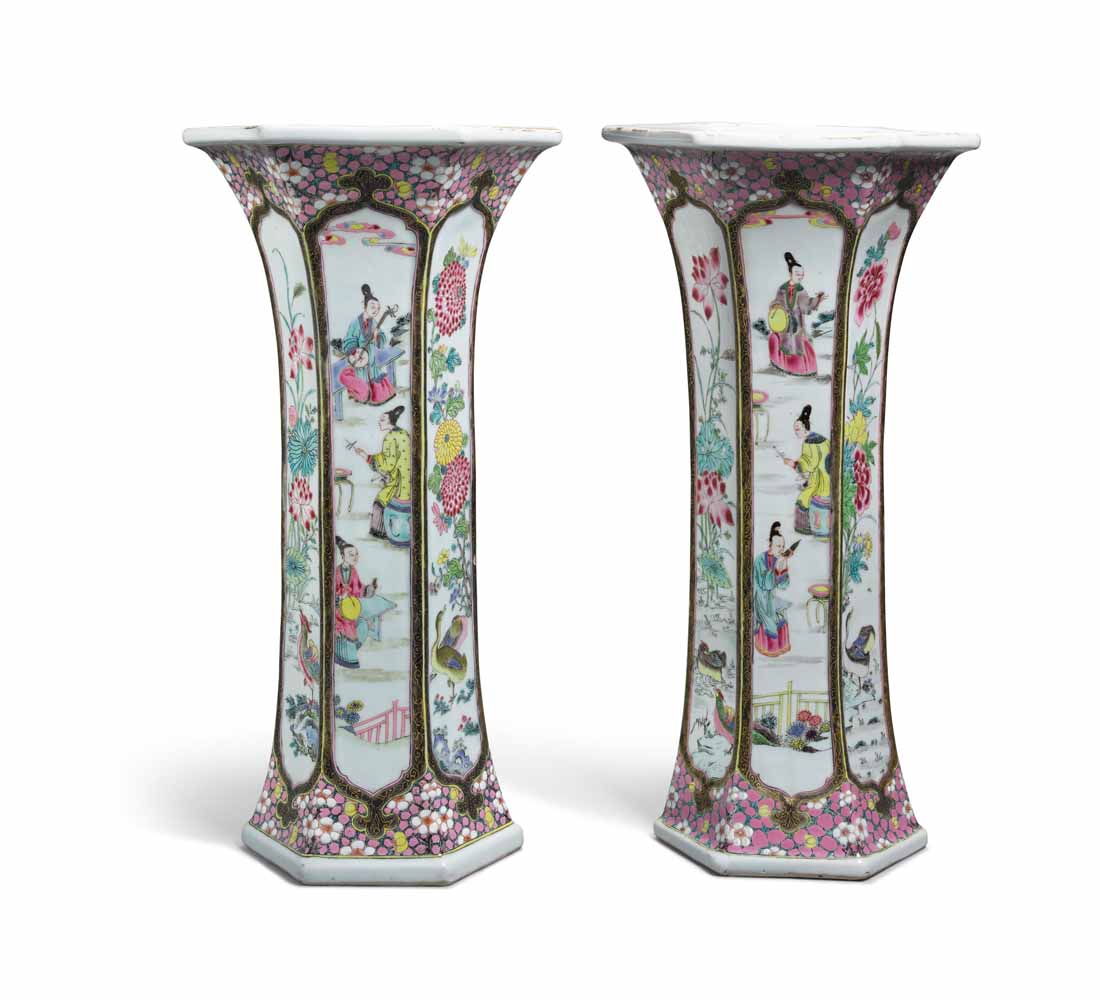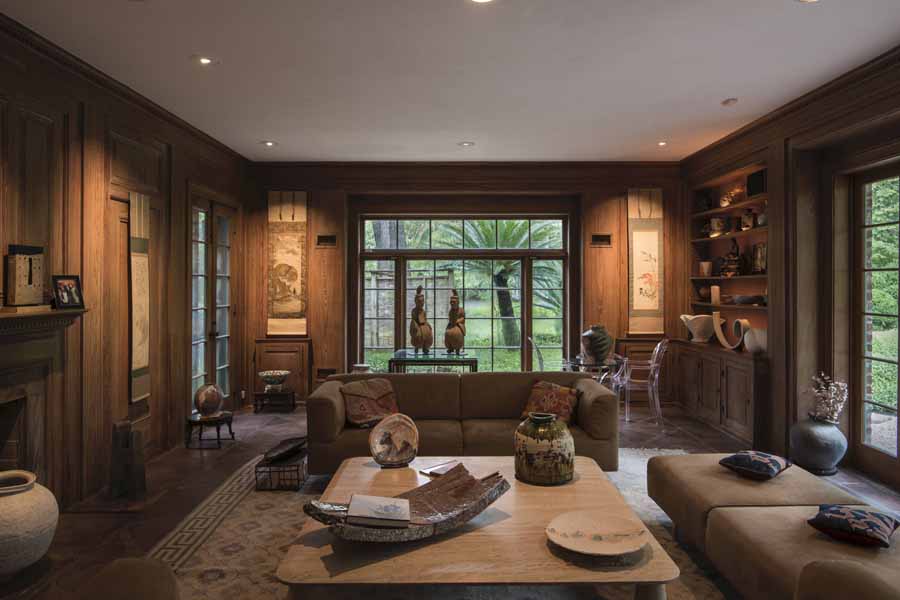
L-R: Paul Binnie (born 1967), Matsumoto Koshiro IX from the play Shibaraku, 1995, oil on canvas, framed 57 x 44 in. (144.78 x 11.76 cm), Scholten Japanese Art and Fesitval Kimono decorated with Carp Ascending a Waterfall, Akita prefecture, late 19th-early 20th century, cotton shibori (shape resist), The John R. Van Derlip Fund and the Mary Griggs Burke Endowment Fund, purchase from the Thomas Murray Collection, 2019.20.84, Minneapolis Museum of Art
The intent focus and long hours of AWNY members Scholten Japanese Arts and Thomas Murray are now coming to fruition with the gallery’s new exhibition NOH: More Drama, Theatrical Subjects by Paul Binnie and the opening of Dressed by Nature: Japanese Textiles at the Minneapolis Institute of Art, respectively. Here we look at the efforts that made these new shows possible.
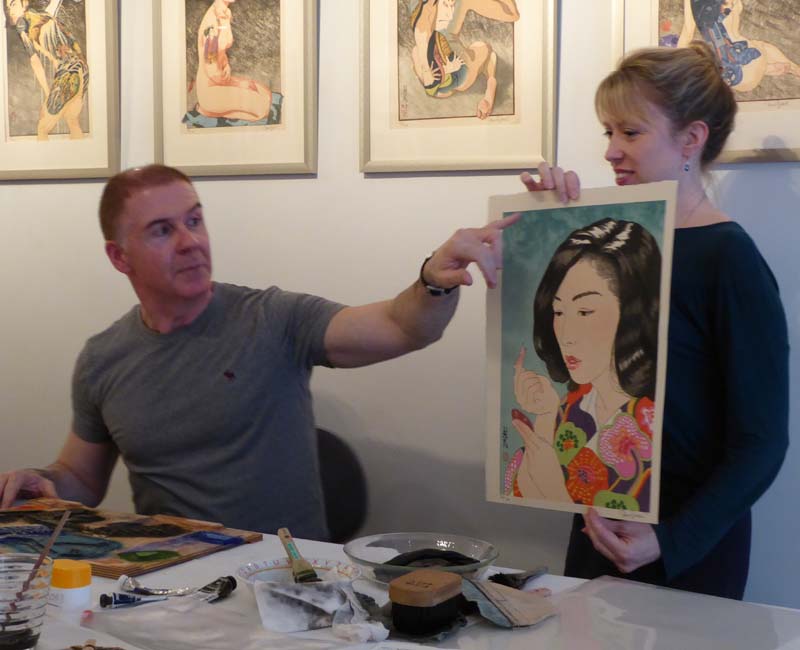
Paul Binnie and Katherine Martin present a discussion of his artistic process in Scholten gallery in 2017.
Noh: More Drama, Theatrical Subjects by Paul Binnie, Scholten Japanese Art
June 16-July 15, 2022
Scholten’s new exhibition presents paintings, drawings, and prints of Japanese theatrical subjects by Paul Binnie. (For more information about this exhibition, click here.) This is the gallery’s fourth solo exhibition of work by this artist, whom Katherine Martin, Director of Scholten Japanese Art, first met in 2007. By a striking coincidence, Martin was given as a gift the book, then recently published, Paul Binnie: A Dialogue with the Past: the First 100 Japanese Prints, shortly before the artist himself visited the gallery in his quest for prints by Hiroshi Yoshida. The gallery’s interest in Binnie’s art was formalized when Martin traveled to see Binnie’s studio in London and immediately recognized that he carried “the mantle of shin-hanga”. With Rene Scholten quickly on board, Scholten organized their first show of Binnie’s work in 2008, Echoes of Japan: the Woodblock Prints of Paul Binnie.
Paul Binnie was born in Scotland in 1967 and studied fine arts in Edinburgh, where he first became enthralled with and started collecting Japanese woodblock prints. In 1993 he moved to Japan to study traditional printing techniques as an apprentice under Seki Kenji (born 1940) for several years. Binnie is unique not only because he combines Eastern and Western practices but also because he undertakes all aspects—design, block-cutting, and printing—himself, rather than involving other specialists. In addition to these images of Kabuki and Noh theater, Binnie is also noted for his tattoo, landscapes, famous scenes of Japan, and bijin-ga (“beautiful women”) series. (Read more about Paul Binnie, click here.)
Katherine Martin commented that collectors of Binnie’s paintings and prints vary depending on the subject. For example, his theater images tend to appeal to Japanese collectors and aficionados of Japanese art, while his landscapes have a broader audience. The visual impact and affordability (at least at the moment) of Binnie’s works also appeal to younger buyers. Among the most noteworthy acquisitions of his prints was the purchase of a complete set of Binnie’s tattoo series by the Metropolitan Museum in 2018 from Scholten Japanese Arts.
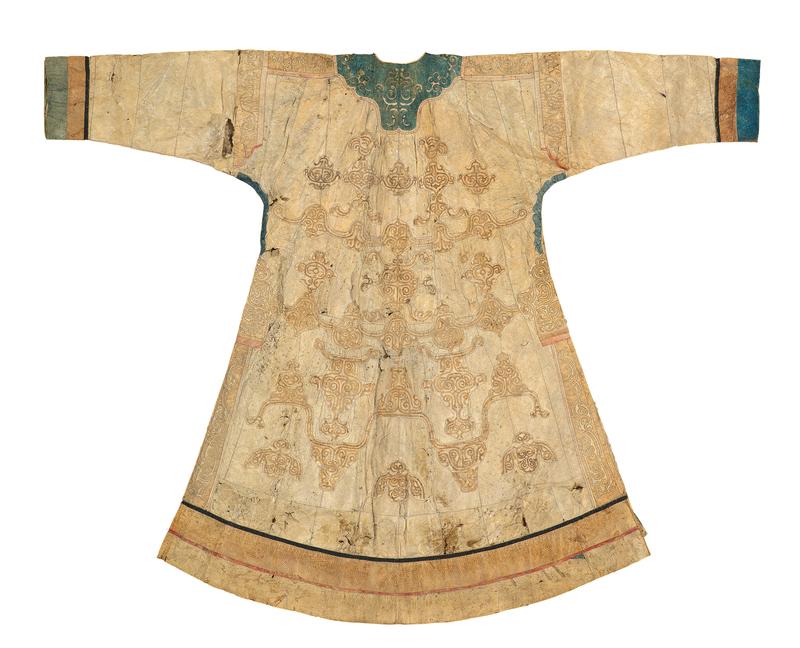
Woman’s fish-skin festival coat (hukht), 19th century, Nivkh people, fish skin, sinew (reindeer), cotton thread; appliqué and embroidery, The John R. Van Derlip Fund and the Mary Griggs Burke Endowment Fund, purchase from the Thomas Murray Collection, 2019.20.31, Minneapolis Museum of Art
Dressed by Nature: Textiles of Japan
Minneapolis Institute of Art, June 25-September 11, 2022
In 2019, Mia acquired Thomas Murray's collection of Japanese textiles and originally planned to display them in 2021. Despite the delay due to Covid, this exhibition will open this week. (For more information about this exhibition, click here ). These textiles focus on the resourcefulness of humans to create clothing from local materials like fish skin (as in the robe above), paper, elm bark, nettle, banana leaf fiber, hemp, wisteria, deerskin, cotton, silk, and wool. On view will be rare and exceptional examples of robes, coats, jackets, vests, banners, rugs, and mats, made between around 1750 and 1930, including the royal dress of subtropical Okinawa, ceremonial robes of the Ainu from northern Japan and the Russian Far East, and folk traditions from throughout Japan.
Andreas Marks, Griggs Burke Curator of Japanese and Korean Art at Mia and curator of this exhibition described Murray’s collection and its impact on Mia’s extensive Japanese art holdings. “Thomas Murray’s collection is equally impressive in its quality and depth. Built over nearly 40 years by a man with a fantastic eye for textiles, a collection of this importance and breadth could not be put together today. Mia is thrilled to be the recipient of these important textiles, which will catapult us amongst the foremost collections of Japanese textiles in the world.”
“The Murray Collection adds important new dimensions to Mia’s Japanese art collection, which is particularly strong in the areas of paintings and prints, sculptures, ceramics, and works of bamboo. Until now, there were only a few textiles in the collection, including Noh robes used in theatrical productions, wedding kimono made of silk, and so-called meisen garments made in the 1910s and 1920s, which feature bold and graphic designs.”
In addition to the extensive research available about these rare objects in Murray’s Textiles of Japan, published in 2018, Murray will speak at Mia on June 26 at 2pm. His talk Accounting for Taste: On the Collecting of Textiles from Japan will introduce the world-class collection of Japanese textiles that he assembled over almost 40 years and will explore the range and artistry of Japan’s tradition of fiber arts, as well as their original usage. To register, click here.
